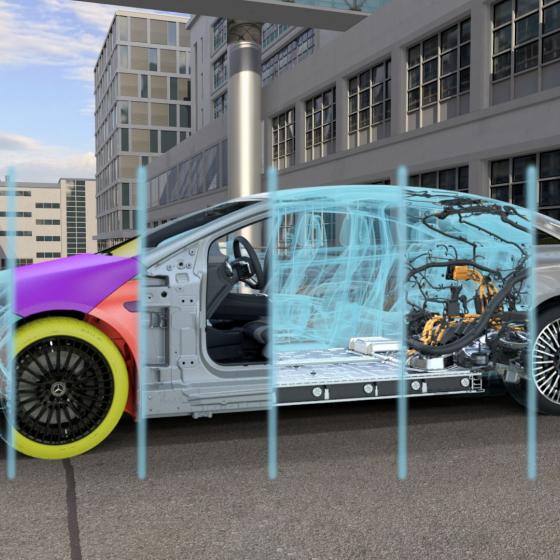We are proud to count amongst our customers all of Germany’s “big 5” automotive manufacturers: Audi, BMW, Mercedes-Benz, Volkswagen and Porsche. All of these companies have been innovators in combining virtual reality technology and automotive innovation to develop groundbreaking developments in design, testing, and prototyping
In this customer success story we’re looking at how ART optical motion tracking systems are used at the Mercedes-Benz Virtual Reality Center (VRC) in Sindelfingen where they are is pioneering new ways to help reduce vehicle development time by focusing on the world of immersive high-end visualization.
This is what Marcus Schäfer, Chief Technology Officer of Mercedes-Benz Group has to say:
"The Virtual Reality Center (VRC) at the Mercedes-Benz Technology Center in Sindelfingen is pioneering new ways to help us reduce vehicle development time.
Today, I would like to delve a bit deeper into the applications that we use, focusing on the world of high-end visualisation.
Inside the VRC, we have created our very own “automotive cinema”. We have rows of seats and a large display area – the perfect place to showcase the models of tomorrow. The centrepiece is our state-of-the-art Powerwall – a giant LED screen that can display 3D images in the very highest picture quality.
These high-end visualisations are not just design representations of the vehicle. In fact, these images are mostly used in the early development phase to focus on technical engineering issues. The models can be rotated and pivoted, all the doors and hoods can be opened – it is even possible to zoom into the interior. When it comes to digital validation, VR provides users with the technology to make their development scopes visible, tangible and easy to evaluate.
Two levels of reality are possible. We either use pre-calculated shadows for a fast overview or high-end real-time simulations that show the vehicle in any desired lighting situation. For example, this is particularly useful for analysing reflections in displays and windshield or the spread of light around the interior. It also works for an interactive evaluation of body joints within tolerance analyses.
We also use VR for the vehicle certification process. This is to make sure the geometric dimensions comply with the regulations and thus fulfil the requirements for things like pedestrian protection. Incredibly, these values must be correct in over 80 different areas to gain type approval.
As you can see, VR is revolutionising the way we work, helping us move from initial concept to series production much faster."
Source: LinkedIn Post by Markus Schäfer, CTO at Mercedes Benz Group
All pictures ©Mercedes Benz Group






